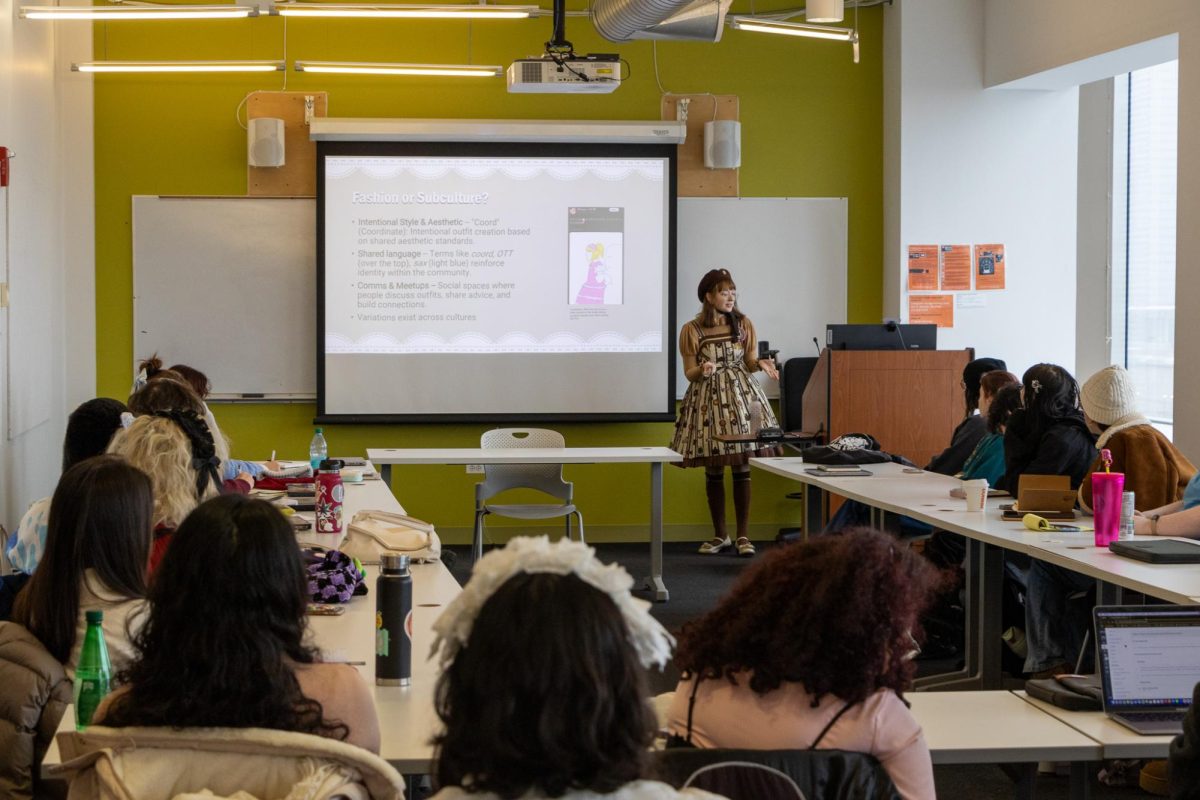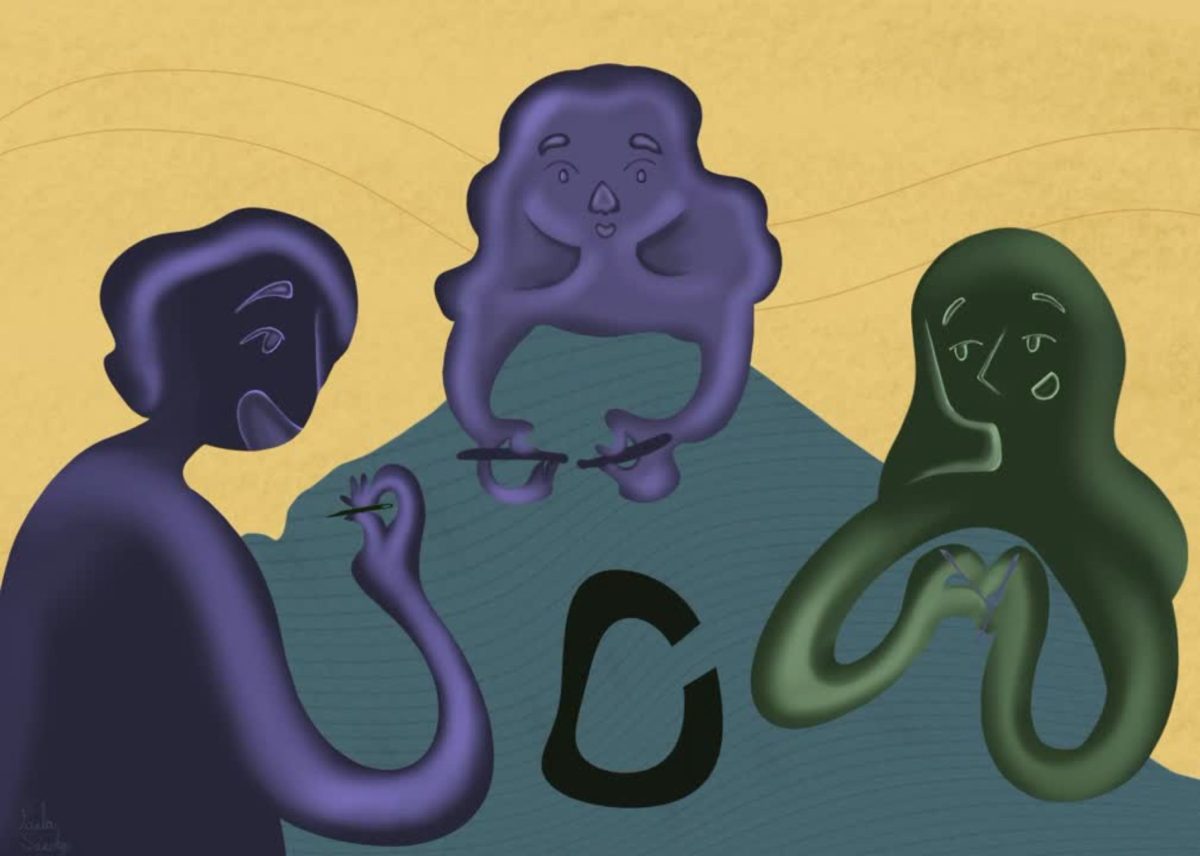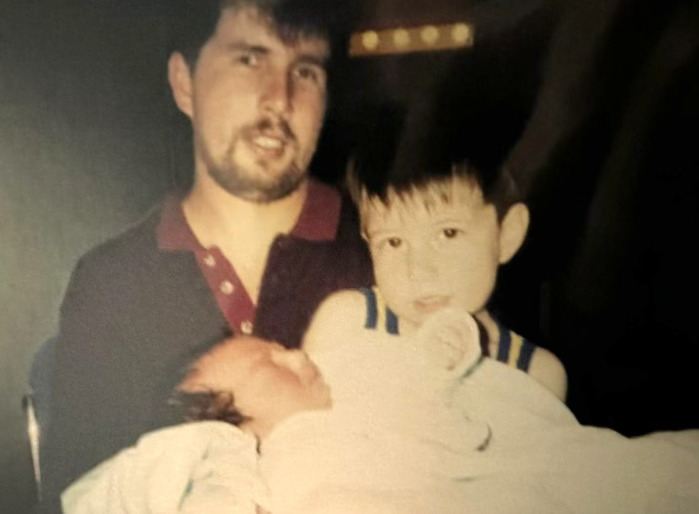The School of Fashion hosted a meet-and-greet on Wednesday, Feb. 12 with Frillinois director and co-founder Connor Bennett, who discussed Japanese youth fashion, namely Lolita fashion.
“Fashion and Dress Beyond the West,” taught by fashion studies associate professor Lauren Peters, welcomed Bennett who gave a presentation about the history of the movement while adorned in a full Lolita “coord.”
Lolita fashion consists of three substyles, according to Bennett. They are sweet, classic and gothic. Sweet has many pastels and a “cute” theme to it, classic is based off of vintage style and gothic is a Japanese take on traditional gothic style, such as the movement gothic cathedrals are based on.
Frillinois is a Chicago-based group which brings Japanese fashion events to the Chicagoland and other areas. They partner with designers and retailers local and abroad to bring current J-Fashion trends to the U.S.
Some students arrived already familiar with Lolita, also wearing “coords” themselves, while others attended to learn more. Junior fine arts major Jocelyn Diaz said they first learned about Lolita from the Nintendo DS game “Style Savvy” when they were 9 years old. They have been wearing Lolita in some form since starting college.
“I usually wear it to work, class, or at least like a toned down version of it,” Diaz said. “If I have somewhere nice to go to, a party or even around my family, I still wear it as well. I don’t limit it as a special occasion thing, I truly do bring it to my normal life.”
Bennett said she teaches the history of Lolita to keep its memory alive.
“I think archiving fashion is really important, making sure that we keep these street fashions alive so people remember them,” Bennett said. “Otherwise, it will be lost to the sands of time,”
Others in the class were interested to hear more. Senior fashion design BFA Bryannah Minor admittedly did not know much about Lolita fashion, but through her time in the class, has learned about the personalization Lolitas bring to each piece.
“Lolita, I feel like it’s become more globalized,” Minor said. “So many people have been introduced to it, and some people are making their own take on it. It’s been personalized, in a way, with each different culture and each person.”
Diaz, who attended a Frillinois free event last November known as the Frillinois Market, said they hope to see a rise in the frequency of similar events, and that it was a great way to experience Lolita community in Chicago.
“[I’d like to] see more events in Chicago that are widely available, and for free, for Lolitas and other people that are interested,” Diaz said.
Others looking to get started while at the meet and greet asked about how to find these, according to Bennett, difficult to find pieces. Bennett shared places such as American online second-hand store Lace Market, as well as popular Japanese brands like BABY, THE STARS SHINE BRIGHT and Angelic Pretty.
Minor said one reason she enjoyed learning about Lolita fashion was getting to see the culture behind different trends and how this plays into fashion.
“I think it’s just interesting to be able to see other people’s culture,” Minor said. “It’s something that’s not essential, but it is essential, in a way, in order to understand fashion.”
Lolita fashion, known for its wide skirts and stand-out femininity, emerged in the 1970s and, according to Bennett, has evolved very little since. Bennett explained Lolita became popular for the essence of its ideals, which include not dressing for the male gaze or making oneself less visible. Diaz reflected an appreciation for these values of standing out while still dressing modestly.
“I can be super elaborate and loud, but I can still kind of be covered head to toe,” Diaz said.
Frillinois will be hosting The Great Lace at The Palmer House Hotel March 25 to 30, which will feature guests such as Lolita model RinRin Doll and brands such as Atelier Pierrot.
Copy edited by Matt Brady









